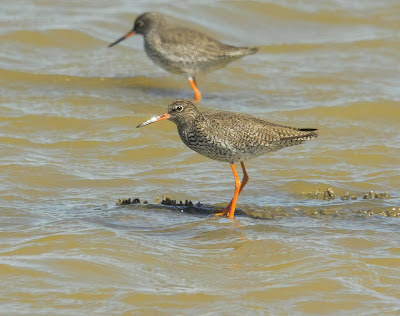 |
| A Happy Man - Look behind you! |
Brazil may be famous for its amazing football team and for Salsa dancing and even nuts but it is also a wonderful place for watching wildlife. Together with nine friends we decided largely on the Pantanal because of its reputation of being the largest wetland in the World and giving excellent chances of seeing Jaguars as well as many bird species.
 |
| Entrance to the Transpantaheira |
We were not disappointed. As soon as we entered the Transpantaheira a dirt road which runs for 148 kilometres south crossing over 120 wooden bridges we realised how amazing this place is. We had flown over 6,000 miles from London via Sao Paulo and Brasilia to reach Cuiaba before heading south via Pocone. We arrived in the Pantanal proper in the afternoon and were making our way to our first lodge Pouso Alegre. Just before dusk we stopped on a bridge by a large area of water to watch our first feeding group of birds including the huge Jabiru Storks, Wood Storks and Cocoi Herons. Dozens of Black-crowned Night Herons were also emerging to feed. We watched the sun set over hordes of Yacare Caiman gathered at the edge of the water.
 |
| Sunset over the Caiman |
We arrived at our Lodge in the dark and were excited at the prospect of dawn. We were out by 6am and exploring the open grassland and park-like woodland. I should mention that the best time for visiting is the dry season and it was hot and humid as we set forth. Early morning noises were being made by Buff-necked and Plumbeous Ibises nesting in the taller trees. Rufous and Pale-legged Horneros together with Thrush-like Wrens kept up a strident chorus. It was truly a day of woodpeckers with at least 5 species being seen.
 |
| Buff-necked Ibis |
With so many birds to see it was difficult to know which way to turn. Striking Vermilion Flycatchers hawked from low branches, Chaco Chachalacas were deafening as they gathered in the tops of trees and then suddenly our first looks at Hyacinth Macaws the biggest parrots in the World. This impressive species faced extinction not long ago. It is a species that has recovered because of eco-tourism. Local landowners put up nest boxes and encourage the birds knowing people will pay to come and see them.
 |
| Hyacinth Macaw |
Our next destination was Southwild Pantanal a lodge alongside the River Pixaim. Here a tower has been erected close by a Jabiru's nest and Mark one of our group was soon taking advantage of this.
 |
| Mark and Jabirus |
We enjoyed several river trips here finding many birds. the highlight though was the return at dusk when the sky would be full of Nacunda Nighthawks and enormous Bulldog Bats and the occasional Great Potoo cruising along hoovering up the masses of insects. The atmosphere was really special. Most lodges had feeding station close by which brought birds close to our rooms. Many species were present but Toucans and Aracaris were great to see so close.
 |
| Toco Toucan |
 |
| Chestnut-eared Aracari |
Perhaps the commonest bird in the whole Pantanal is the Yellow-headed Cardinal which come to feeders in their droves.
 |
| Yellow-billed Cardinals |
We headed as far south as the road would take us to Porto Jofre before the River Cuiaba barred any further progress. It was very hot here with temperatures reaching 45 degrees on three days. An impressive set up with a small lake with enormous lily pads. A good place to watch Wattled Jacanas using them to quickly cross the water.
 |
| Giant Lily Pads |
 |
| Wattled Jacana |
This is the place though for Jaguars and we had two river trips and saw this magnificent beast on both occasions. The feeling of privilege as you moor up just yards from a truly wild animal which treats people like me with total disdain is hard to describe. Jaguars are also doing very well here with total protection and co-operation with land owners also looking after their needs.
 |
| A male Jaguar at rest |
We headed back north birding all the way seeing specialities of the area like Maguari Storks and also hordes of Snail Kites.
 |
| Maguari Stork |
 |
| Snail Kite |
We spent the last day and night on the Pantanal at Pousada Puival where we obtained our best view of Greater Rheas wandering over a vast grassland. This is a working cattle ranch and we were taken to a large stretch of water where many birds were gathering to roost. We did fail though to find a Giant Anteater.
 |
| Greater Rheas |
We have to be eternally grateful to my good friend Ecuadorian Xavier Munoz. Through his company Neblina Forest Tours he organised the whole trip and acted as our guide. His knowledge of South American birds and other wildlife is outstanding and his energy and leadership enabled us to see so much.
 |
| Xavier Munoz |
In my next post I will talk a little about the other areas we visited in our Brazilian adventure.
























































